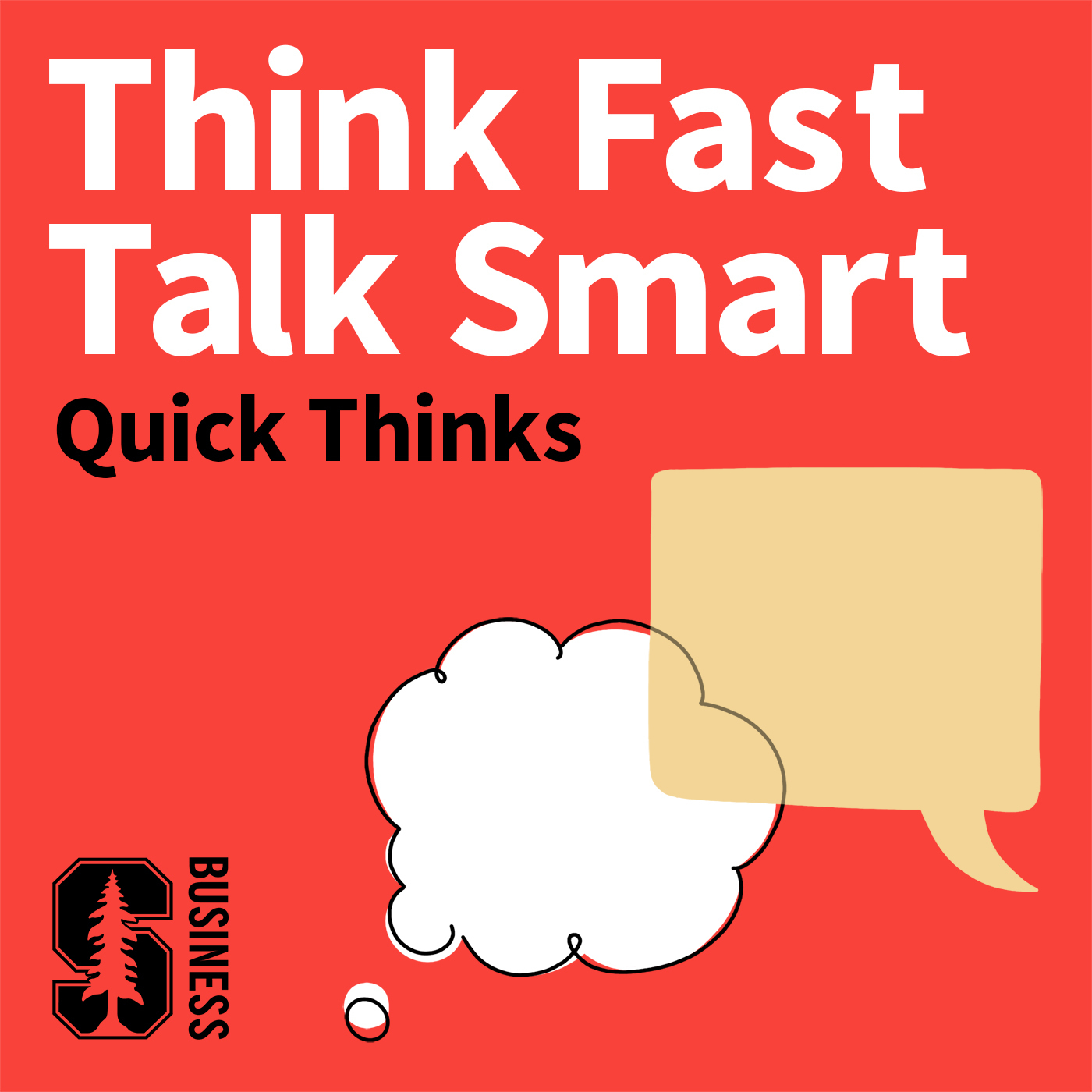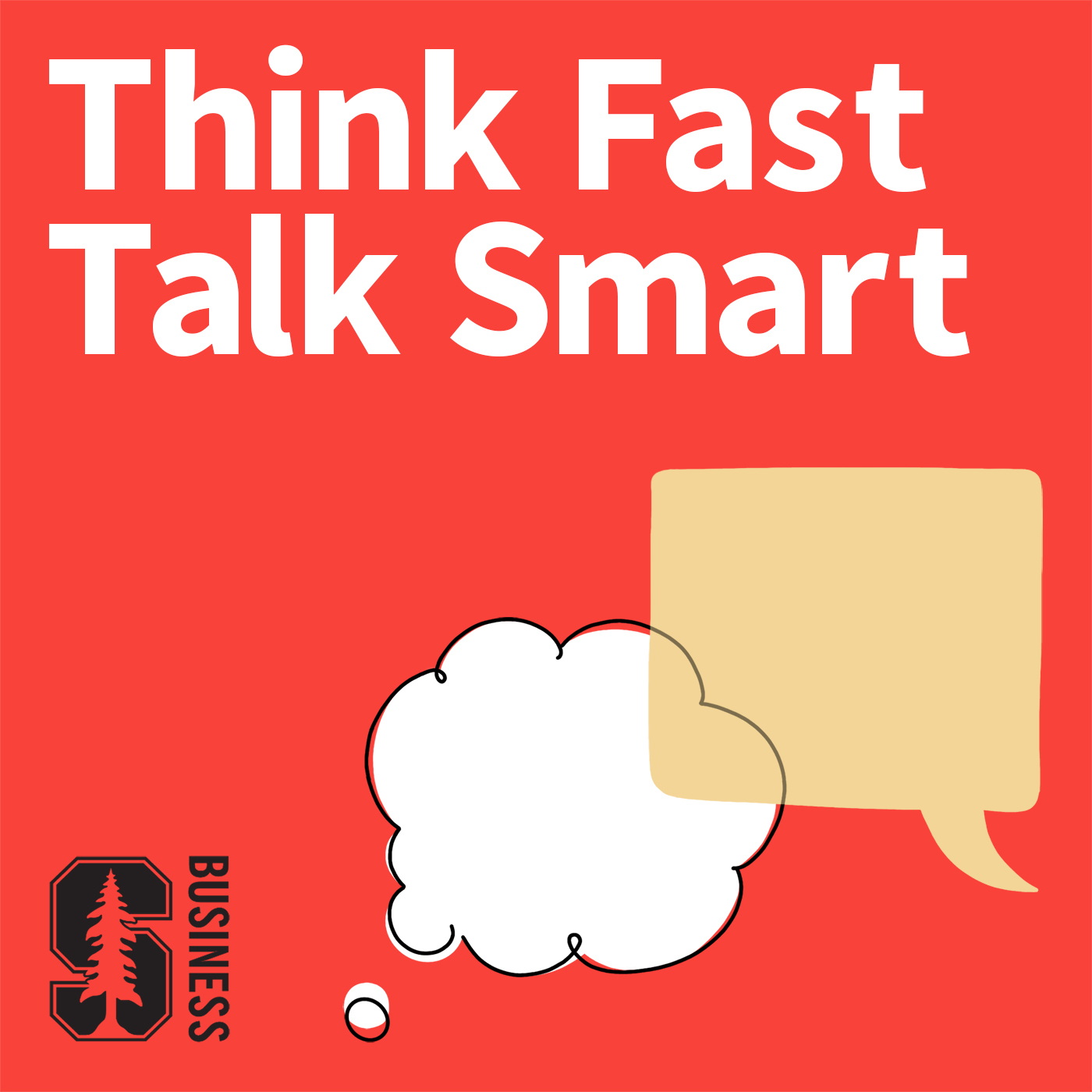
6. Quick Think: Communicating and Leading Virtually

Think Fast, Talk Smart: Communication Techniques
Deep Dive
Shownotes Transcript
Hi, Matt here. I invite you to look into Stanford Continuing Studies. For over 20 years, I have taught in the program. Discover a diverse range of courses available both online and in person to anyone, anywhere in the world. Classes cover everything from fundamental business skills to the fascinating world of AI. This fall, join me for Communication Essentials for Work and Life, a new course designed to enhance and hone your communication skills in various situations.
Each week, guest speakers will join me for interactive lectures and Q&A sessions on topics like persuasion, storytelling, nonverbal presence, and reputation management. The course starts September 24th, and registration is now open. Learn more at continuingstudies.stanford.edu.
Communicating virtually is no longer a convenience. It's now a necessity. As more and more companies and classrooms transition to online communication, we all can benefit from best practices to ensure our ideas are communicated clearly and concisely. My name is Matt Abrahams, and I teach strategic communication at Stanford Graduate School of Business. And welcome to a Quick Thinks episode of Think Fast, Talk Smart, The Podcast.
I believe there are four main areas to explore as we strive to be more effective and engaging online communicators. So let's get started. The first has to do with what I call virtual presenting hygiene. This has to do with how you've set up your environment and tools. First and foremost, it's important to have a place that is quiet and has a neutral background. Be thoughtful of the lighting that you have.
You can invest in professional lighting for video or photography. You want to make sure that you have a camera that is good quality. You might want to purchase an additional mic or a headset that has a microphone in it. When possible, you want your camera to be at your head level. When we communicate to people, we're used to looking them straight on.
So you might need to raise your camera. You can do this by simply stacking a bunch of books or you can actually buy a professional stand. You can always do a recording to make sure that it looks and sounds the way you like. Most of the online tools that we use, Zoom, WebEx, Skype, Google Hangouts, they all have a record feature. Once you have your virtual hygiene established, you want to next focus on presence. Presence has to do with how you appear.
So we need to think about a couple things. First and foremost is you want to look straight at the camera when you present. Many of us are enticed to look at our notes or look at the little thumbnail pictures of people on the screen. And yet to the people we're talking to, it looks like we're looking down. So you want to make sure you look directly at the camera.
I've been known to actually tape a picture of family members or friends right behind the camera so when I look at the camera I see them and it feels a little more natural. It makes sense also to try to stand when you present. When we stand we tend to be more focused, we can use more gestures, we can breathe better, and we don't slouch. So if possible set up your environment so you can stand as you present.
And then finally a little extra tip: get yourself a slide advancer. If you have a slide advancer, you can actually stand farther away from your camera, your gestures can be seen, and you can advance slides very smoothly.
Beyond presence, we have to think about engagement. We have all been part of webinars or web meetings or even teleconferences that are just disengaging. So a couple ways to invite your audiences to pay attention rather than get distracted by all the other things on their phones or on their computers is to start by varying your voice. Humans are wired to pay attention to novelty and things that change. So if you're monotone, you're going to disengage with your audience.
A great way to do this is simply record yourself and listen. You don't have to watch, just listen and see if your voice has variation. If it doesn't, you might consider using more emotive words. When we use emotive words like excited or challenged, we tend to inflect those in our voice. Next, make sure you leverage the tools of the virtual platform that you're using. Many come with polling features, chat features, some kind of feedback where people can raise their hand or signal you're going too slow or too fast.
You can even send people through a chat to an external document like a Google Doc or a shared doc where they do some work and you can see that they're doing that work online. That's a way to get everybody engaged. Finally, invite people to show video as you are presenting. So if everybody can see people, we tend to pay attention more. Humans are wired to be intrigued by others' faces. So if you see others' faces on the screen, you're more likely to pay attention.
So we've talked about virtual hygiene, we've talked about your presence and engagement. Let's talk about some things you can do if you're actually leading the webinar.
or the virtual meeting. First, set expectations. And this comes in two places. I think one of the most underutilized features that we have to set expectations is the meeting invite. In the meeting invite, don't just specify the URL to go to and the time. You can actually set rules that you expect people to follow. For example, state your name before you present. Or you can actually
include some questions that you want people to think about when they come to your meeting or your presentation. That way when you start, you can start immediately with engagement in those questions. So leverage the expectation setting ability of the invites that you send.
Second, when in the midst of your virtual communication you want to solicit input or start dialogue with the people involved, set some boundaries, set some expectations. And you need to do this more narrowly to avoid people over-speaking each other. When using technology there are some built-in delays and we need to make sure that we don't have people overstepping each other. And one way to do that is to set boundaries or expectations that are more narrow than you would if you were in person.
So in person, I might say, I'd now like to hear your thoughts on the implementation plan I just discussed. But when you're virtual, you might say, now I'd like to hear questions about the cost of the implementation plan. And after those come in, you then say, I'd now like to talk about the implementation timeline. And as those issues come in, you can address them. So by taking narrower sets of input or questions, you actually have fewer people over-speaking.
So managing those expectations are important as well. Finally, when it comes to leading a meeting, we know from research that human attention tends to dwindle after eight to 10 minutes. So you want to make sure that you quickly change things up. Maybe you change speakers, maybe you show a short video clip, maybe you take a poll or go into dialogue Q&A mode.
But be sure every eight to 10 minutes that you're changing things up to reinvigorate people's attention. So I hope you're taking away from this Quick Thinks episode of Think Fast, Talk Smart specific things you can do to be a better online communicator. It has to do with your virtual hygiene, your presence, your engagement, and how you actually lead when you're virtually communicating.
Thanks for joining us for another episode of Think Fast, Talk Smart, the podcast. Produced by Stanford University's Graduate School of Business. For more information and episodes, visit gsb.stanford.edu or subscribe to our show wherever you get your podcasts.
Hi, Matt here. Before we jump in, I wanted to let you know about three unique executive education programs offered to senior level business leaders by the Stanford Graduate School of Business. The Executive Program in Leadership, the Emerging CFO Program, and the Director's Consortium Program are all being hosted here on Stanford's beautiful campus in the next few months, crafted with
proven strategies for success, and filled with diverse leaders from around the globe, taught by many of the guests you've heard on Think Fast, Talk Smart. Apply today at grow.stanford.edu slash upcoming to join us.